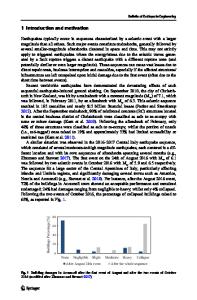Frames of Production: The Case of Ceramics
- PDF / 11,185,250 Bytes
- 36 Pages / 439.37 x 666.142 pts Page_size
- 81 Downloads / 303 Views
Frames of Production: The Case of Ceramics Kristina Carlsson 1 & Veronica Forsblom Ljungdahl 2 & Jeanette Gustavsson 3
# Springer Science+Business Media New York 2017
Abstract The ceramics material from Nya Lödöse comes from many different places in Europe and represents a variety of production forms, from small-scale sideline household production to almost an industrial level. However, not much is known about production during the sixteenth century and the different agents involved in this sphere of production, distribution and consumption. This article seeks to identify and discuss different types of production forms in the ceramics from Nya Lödöse and problematize the complexity of the contact networks. Methods such as ICP-analysis can provide opportunities to further understand production and distribution. We demonstrate how we have traced a presumably local production despite the absence of any known kiln site. We argue that the influx of ceramics from such a variety of production places is key to understand better how the contact of network on different levels. Keywords Ceramic production . Material culture . Contact networks . Urban consumption . ICP-analysis
Ceramics in Nya Lödöse in General Nya Lödöse was established on the west coast of Sweden 1473, and was abandoned in 1624, after Gothenburg was founded. At that time, some citizens from Gothenburg built large farmsteads on the old town area. This means that most of the ceramics found in Nya Lödöse dates from between 1473 and 1624, but that some derive from a later period. * Kristina Carlsson [email protected]
1
National Historical Museums, Göteborg, Sweden
2
Bohusläns Museum, Uddevalla, Sweden
3
Rio Göteborg, Natur- och kulturkooperativ, Göteborg, Sweden
Int J Histor Archaeol
Ceramics from urban archaeological contexts has often been discussed as signs of international trade and as a sign of social or economic status in some earlier publications and this also applies to the material from Nya Lödöse. Since ceramics are usually not mentioned in available tariff lists or inventories from the period, where the value of the object is specified, it must mean that ceramics were not status objects. The pots easily broke into several shards, which in turn are well preserved. This means that ceramics often dominates in archaeological assemblages. An archaeological discussion of the quantities of ceramics is often built on the basis of the number of shards, which varies greatly between different types of ceramics and their waste conditions. If one looks at the number of vessels, the shards represent distributed per plot and over time one gets a different picture of the quantity of the ceramics used in Scandinavian households during the period when Nya Lödöse was active. The archaeological material from Nya Lödöse tells us that in general, 5–10 pots were in use per household at the same time, and that one or two new pots were broken and superseded each year. Jette Linaa (2006: 31) has noted about the same number of vessels in some invent
Data Loading...










